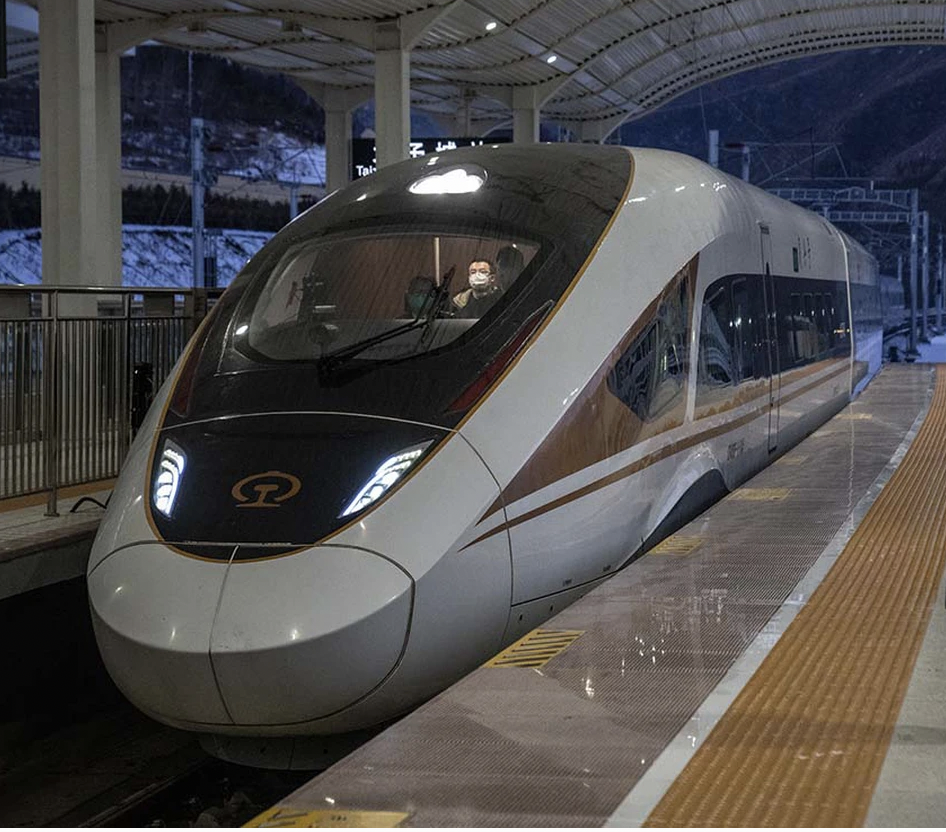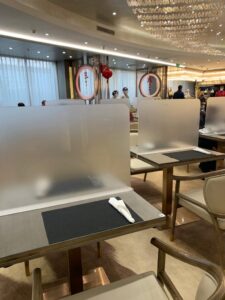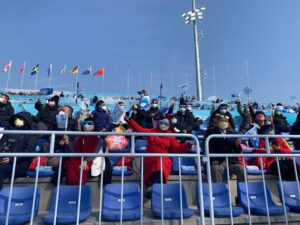Life in the Loop: Inside the 2022 Olympic Winter Games
A first-hand account of how stakeholders are navigating through Beijing
Posted On: February 11, 2022 By :“Together for a Shared Future” is the slogan for the 2022 Olympic Winter Games. Due to COVID-19 restrictions, however, there is not much physical togetherness in Beijing. But hopefully the shared admiration and respect for all the athletes competing brings the world closer together.
Life in the so-called close loop that has been established for COVID-19 mitigation may not be glamorous, but it is functional. The athletes are competing, broadcasts are being distributed, and media are sharing the triumphs and tragedies of the Games.
Although I can see the “Bird’s Nest” stadium from my hotel room and could walk there within 10 minutes, I am not allowed to exit the hotel perimeter unless I am in an Olympic-authorized bus or car. Likewise, the Main Media Center is within a few blocks of the curling and hockey venues but everyone must be transported to go from one to the other. I’ve noticed more people taking the steps in venues to get some exercise.
There are three Olympic clusters for these Games. In Beijing, the transportation system covers 37 official hotels spread throughout the city (not including the hundreds of hotels for volunteers and contractors that have their own transport system), along with the Olympic Village, airport, railway station, six competition areas, three training venues, the media center and a medals plaza. The loop is large with some hotels up to an hour away from the media center by bus.

With the proper credentials, you can travel from the Beijing cluster to another cluster by bus, car, or the high-speed train. Reservations for the train are required through a special railroad app with specific carriages designated per accreditation category. The driverless train travels over 217 miles per hour, has Wi-Fi, televisions with Olympic coverage and arrives in 50 minutes (three hours by road) with some scenic views along the way. It’s an exciting ride just to get out of one bubble and enter another exploring more of China along the way.
Robot Bartenders

Food and beverage is available in hotels, the media center and at venues (either a concession stand for media or the Olympic family hospitality lounge for officials). Holding a conversation while dining is purposely limited by the plexiglass barriers that limit sound. Some of the glass is also tinted to discourage any discourse. From what I am told, the plexiglass barriers were tinted in the Olympic Village dining hall and there were so many complaints it was all changed overnight. Most hotels also have a small convenience store. Unlike the Tokyo Games, alcohol is available in the media center with the Robot Bar a popular attraction. Some hotels have lobby bars but not many as this requires additional staff and all hotel workers must be housed within the loop as well so services are limited.
As far as COVID-19 countermeasures are concerned, everyone is tested daily via a throat swab (fortunately the daily tests are much less aggressive than the airport test) and temperatures are automatically taken when passing through security and flashed on the screen with your photo. If you miss a test, the accreditation will block you from entering a venue or transport. Security is tight but does not require taking off jackets or putting all electronics through the X-ray machine (only bags) allowing for a smoother process.
Waving from a Distance
The local Chinese spectators live outside the loop and are shuttled from a designated meeting point in and out of specific areas in the venue — never mixing with those inside the loop. We can wave from a distance and through a plexiglass barrier. These individuals are invited by Olympic sponsors or local officials (there are no tickets for sale to the general public) and must show multiple negative COVID tests to gain entry. Each venue has its own in-game entertainment including video boards, cheerleaders and live music, encouraging fans to cheer and wave their Olympic flags. The number of local Chinese fans seems to be increasing, which is adding to the overall atmosphere of the Games.

Overall, the experience of living in the loop is like living in a global city with 60,000 athletes, team officials, media, volunteers, staff, and contractors representing 84 countries — even though we’re in one of the largest cities in the world. Although the communication and connection may be limited, it is still a once-in-a-lifetime experience to witness how the Chinese have been able to organize the Games with a zero tolerance COVID policy and through the event so far, to do that successfully.
 Editor’s Note: George Washington University sports management professor Lisa Delpy Neirotti is on the ground in Beijing for SportsTravel. A veteran of the Olympic Games, this will be her 21st consecutive Games in various capacities. She will be filing stories for SportsTravel throughout the Games.
Editor’s Note: George Washington University sports management professor Lisa Delpy Neirotti is on the ground in Beijing for SportsTravel. A veteran of the Olympic Games, this will be her 21st consecutive Games in various capacities. She will be filing stories for SportsTravel throughout the Games.
Posted in: Olympic Sports, Paralympic Sports